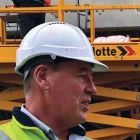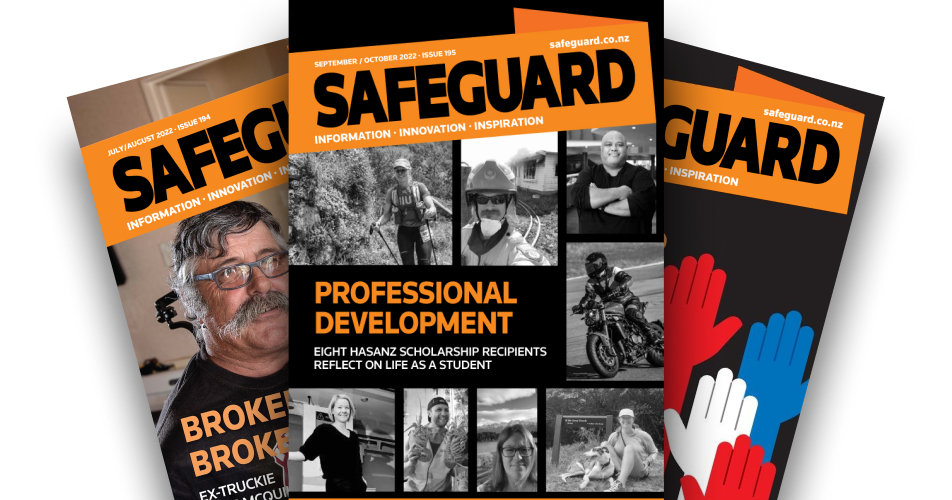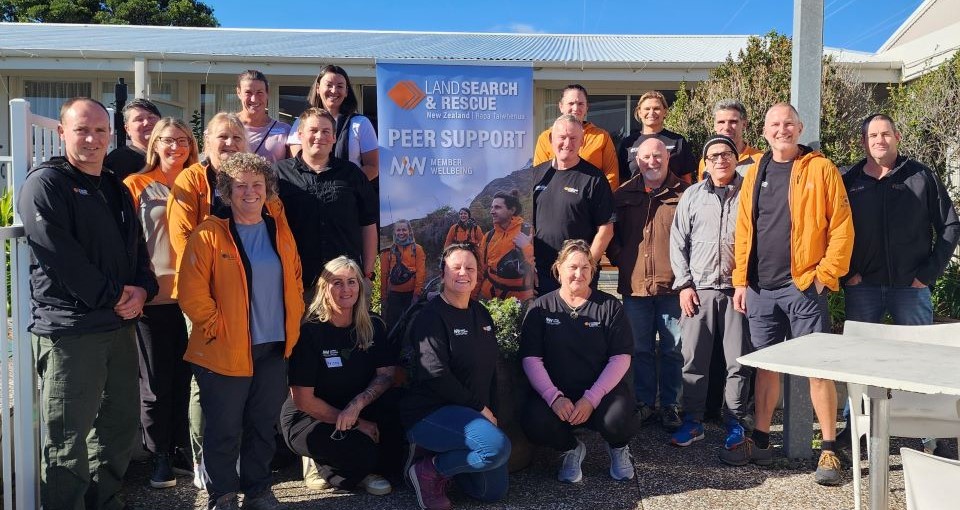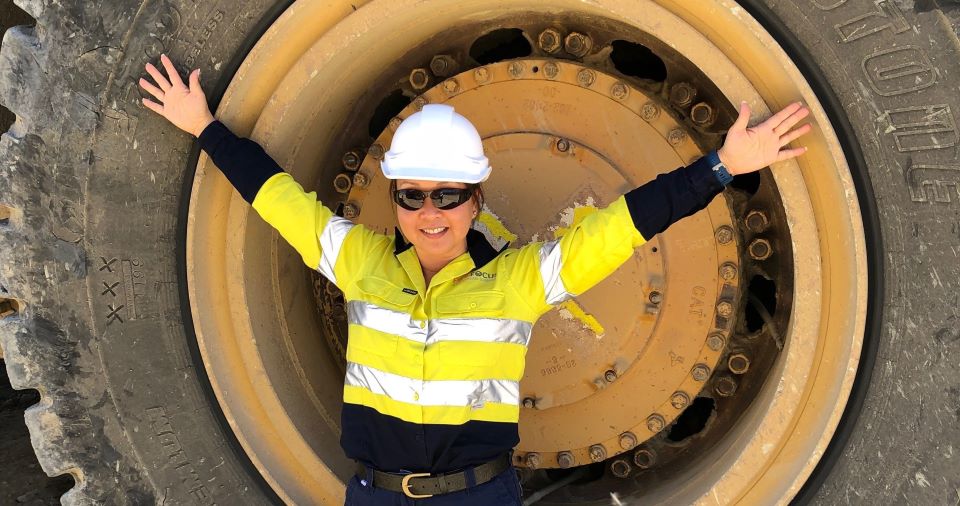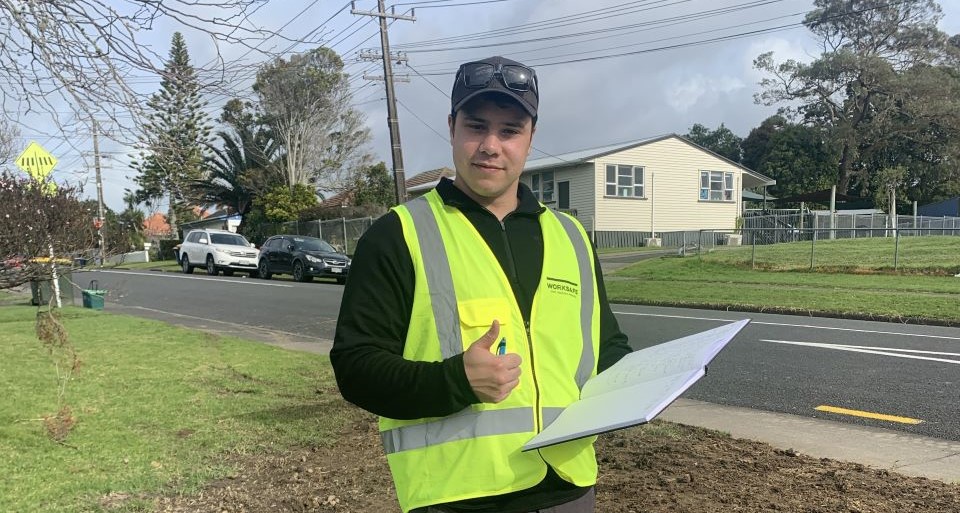When Paul Duggan joined the Canterbury Safety Charter in 2019 as general manager he knew little about health and safety. He taught high school physics for 20 years before becoming chief executive of the Canterbury Basketball Association, a role he held for five years.
“I was completely familiar with the world of basketball. I’d played it all my life, coached it, I knew all the people. So the Charter was stepping into a field I knew nothing about. The challenge was, could I learn and grow as part of this new position?”
Having grappled with the HSW Act in his basketball role, he’s happy to say that in his Charter role he’s done lots of ‘learning and growing’ about the meaning of health and safety.
“It’s interesting how you change your perspective about something once you get into it. You find it’s not that way at all.”
One thing he picked up early on is that health and safety isn’t just the responsibility of people with those words in their job title; that it is everyone’s responsibility, and that H&S specialists are there to advise, to facilitate problem solving.
Another is the passion H&S people bring to their roles. “Their passion is in dealing with people and improving their lives. That comes through very strongly.”
Putting these two things together, he says, means H&S is something of a common thread that an organisation like the Charter can use to connect people within its member companies across multiple levels.
Earthquake origins
Originally called the Canterbury Rebuild Safety Charter, the organisation was set up in the wake of the 2010 and 2011 Canterbury earthquakes as the scale of the required rebuild became apparent. What was also clear was that if the construction sector applied a business as usual approach to the rebuild, modelling suggested there would be one fatality and many serious injuries each year.
The Charter was set up as a membership organisation with a clear mandate to improve H&S standards in construction in the region. After all, there had already been more than 180 lives lost in the earthquakes. Having construction workers killed during the rebuild was an unbearable prospect.
“More lives lost in the rebuild would have been more pain,” says Duggan. “It would have piled on more grief for the Canterbury community that was already suffering so much.”
The Charter enabled companies of all sizes in the broader construction sector to come together, take off their competitive hats, and talk cooperatively about their H&S challenges and how best to meet them.
This, says Duggan, includes people at all levels in organisations: chief executives, H&S specialists, and H&S reps. All coming together with a common goal.
“It creates those important vertical connections. People on the ground being able to communicate in a Charter networking forum with the people at the top.”
Charter commitments
These days there are around 350 member organisations, ranging from, as Duggan puts it, large construction companies to “the man in a van”. Each organisation signs up to the Charter’s commitments, namely to improve H&S outcomes in ten key areas: Leadership, Engagement, Reporting, Overlapping duties, Critical risks, Site safety, Site induction, Training, Impairment, and Health & wellbeing.
Members get access to resources and tools developed over the years, including an online assessment tool which gives a traffic light response to how an organisation measures up to each of the ten commitment areas.
There’s a monthly newsletter and usually a monthly event. Recent events include Halo leadership training, airborne risks, and Work Should Not Hurt with CHASNZ. Members have had a tour of the Cathedral rebuild, and a briefing on risk management at the site of the new stadium. A conference on mentally healthy work is coming up at the end of June.
As well as Duggan there are two other staff: an administrator and a business development lead. There are also two volunteer committees, one for health and safety leaders, the other being a professional services working group for architects, designers and facilities management people.
Two key surprises
More than three years into the role, Duggan says many things have surprised him, but perhaps two stand out, the first being the overturning of his perception about what health and safety means. This came early on, when he came across the American human performance guru Todd Conklin. “You’re probably familiar with him,” he says.
Conklin’s story of investigating a fatal head-on collision between two trains resonated with him. In it, recalls Duggan, one train ran a red light. The driver was texting at around the same time. The company blamed driver error and said it was going to ban mobile phones in locomotive cabs.
At this point Conklin entered the scene and reviewed the company’s investigation, finding the texting issue was interesting but not vital. Instead, he found the problem was a system failure.
“That was a real wake-up call for me. I went, hang on, you can think about this differently.”
Now, whenever Duggan hears terms like operator error bandied about, he stops. “Is that truly the case, or is there something embedded in the system which enables those things to happen?”
The other thing that has surprised him is the number of health and safety practitioners who got into the role because an incident they were involved in or witnessed caused them to resolve to try to prevent such things happening again.
“It’s a common thread – that inherent desire to improve outcomes for their fellow workers. That’s a really great thing to be part of.”
Change in funding
The role of the Charter hasn’t changed but its source of funding has. Originally government-funded, the organisation now has to be self-sustaining. Duggan says membership fees account for around 30% of its revenue, the rest coming from specific projects it carries out on behalf of agencies like ACC and WorkSafe.
An example is BIMSafe New Zealand, a $1.7m project funded over three years to use Business Information Modelling technology as a tool to reduce construction injuries. It’s a collaborative partnership between the Charter’s professional services working group and the Building Innovation Partnership at the University of Canterbury.
Opportunities elsewhere
The key question, of course, is this: could the Charter model, so successful in Canterbury, be usefully repeated elsewhere in the country? And if so, how would it happen?
Duggan is sure the model has legs, and has recently put forward a proposal for how it could work with the Cyclone Gabrielle Recovery Taskforce. The beauty of the model, he says, is that it is a bottom-up model driven by local people and organisations, not top-down.
“There’s opportunity in the North Island. There’s a huge amount of infrastructure work to be done with a big workforce, including lots of SMEs and migrant workers.
“It’s an opportunity to set up something like the Charter to try a different sort of intervention, because the reality is that the number of injuries in construction has remained relatively static.”
He suggests a hub-and-spoke model could work just as effectively as the Canterbury model, provided there were people on the ground at each spoke.
“The strength of the model is having people on the ground to help bring other people together to collaborate. But a hub based in Auckland with field officers in Northland, Coromandel, Bay of Plenty, Gisborne – that could work effectively.”
He recalls the charter model was originally set up for the massive construction required in London for the city to host the 2012 Olympics. “They had no deaths in the construction of all their facilities. That was the reason the model came to the Christchurch rebuild. And it’s been shown to work again. So the opportunity is to leverage that somewhere else.”
A crisis such as the earthquakes provides motivation to set up a Charter-like model, because any crisis creates opportunity for change. But Duggan reckons it also has sustainable value in the longer term. “The legacy can keep on. We are still operating and still doing good here.”
The charter evolves
Meanwhile, back in Canterbury, Duggan says an ongoing challenge for the Charter is how to better engage with the plethora of small businesses involved in the wider construction sector. He acknowledges this group is always stretched for time and resources, but points to ACC data which shows a large proportion of construction injuries come from the SME sector.
“They won’t have a dedicated H&S person. The person doing H&S will also be involved in lots of other stuff. We’re trying to engage with them to give them the tools they need.”
Looking ahead, he recognises the need for the Charter to evolve to match the evolution he observes in health and safety. Using a football analogy, he says the need is to focus on where the ball will be, not where it is now.
“Where is the industry going? What future needs can we fulfil?”
Recent shifts he identifies include the emergence of Safety-II, the need to mitigate psychosocial risks, and the increasing use of new technologies, such as BIMSafe. The opportunity, as he sees it, is to encourage organisations to move away from bureaucracy and documentation and to focus more on verification that critical risks are under control.
“How do we know these things are actually working? And how can we tweak them to make them better? The industry is always going to evolve. It’s up to the Charter to evolve with it.”
